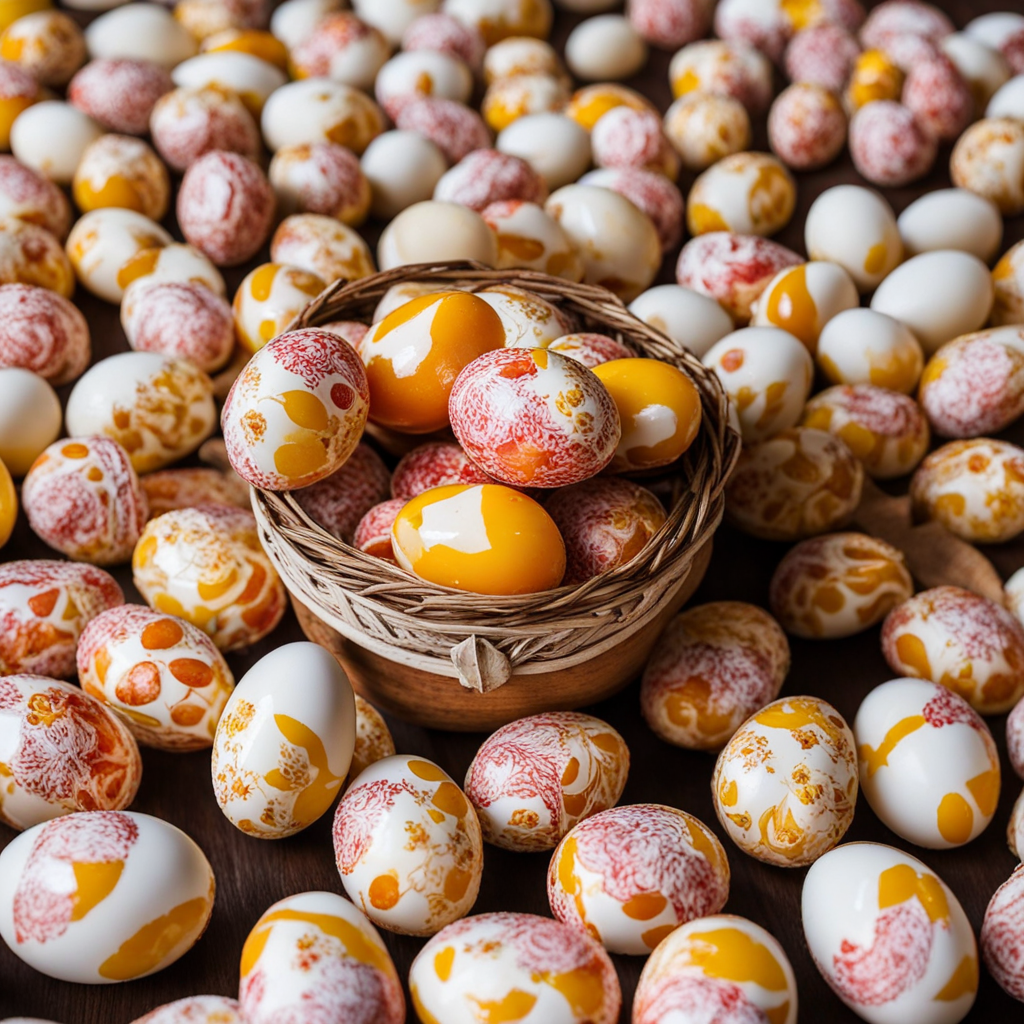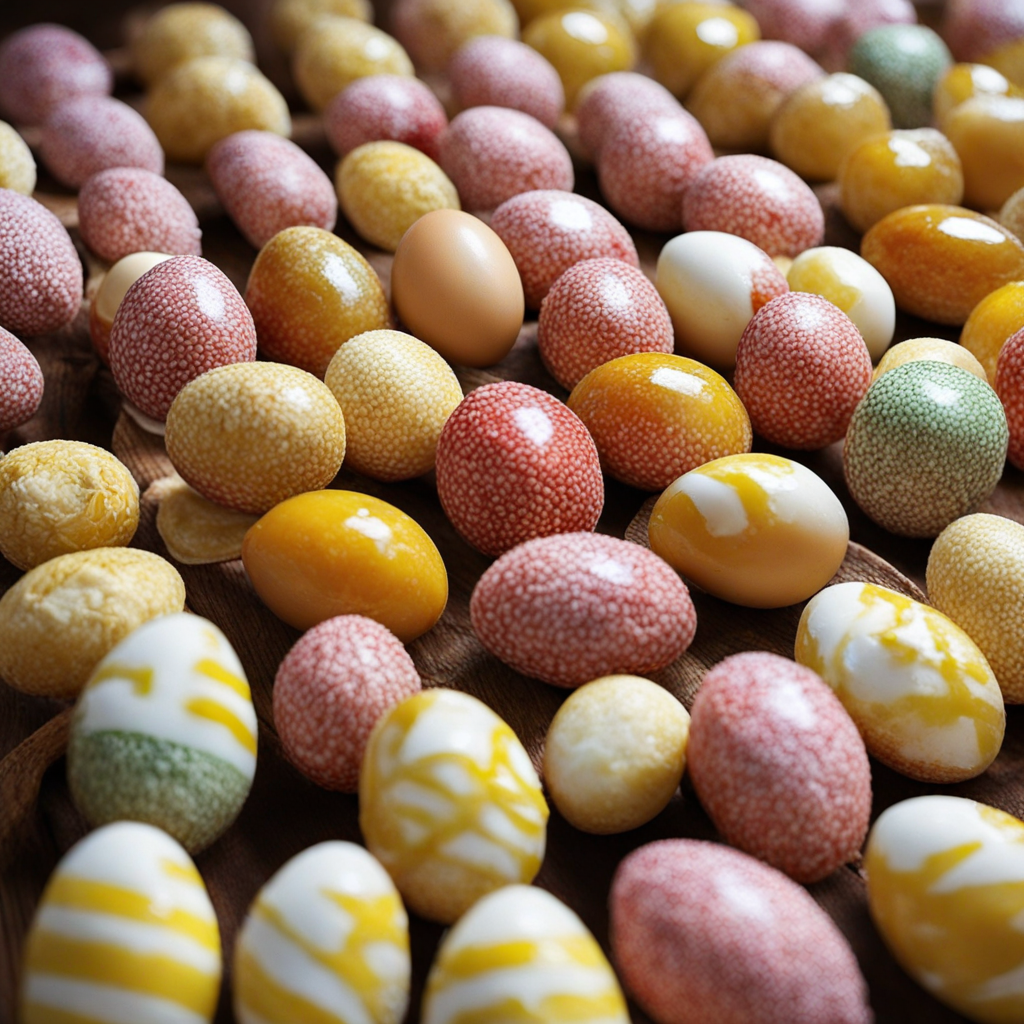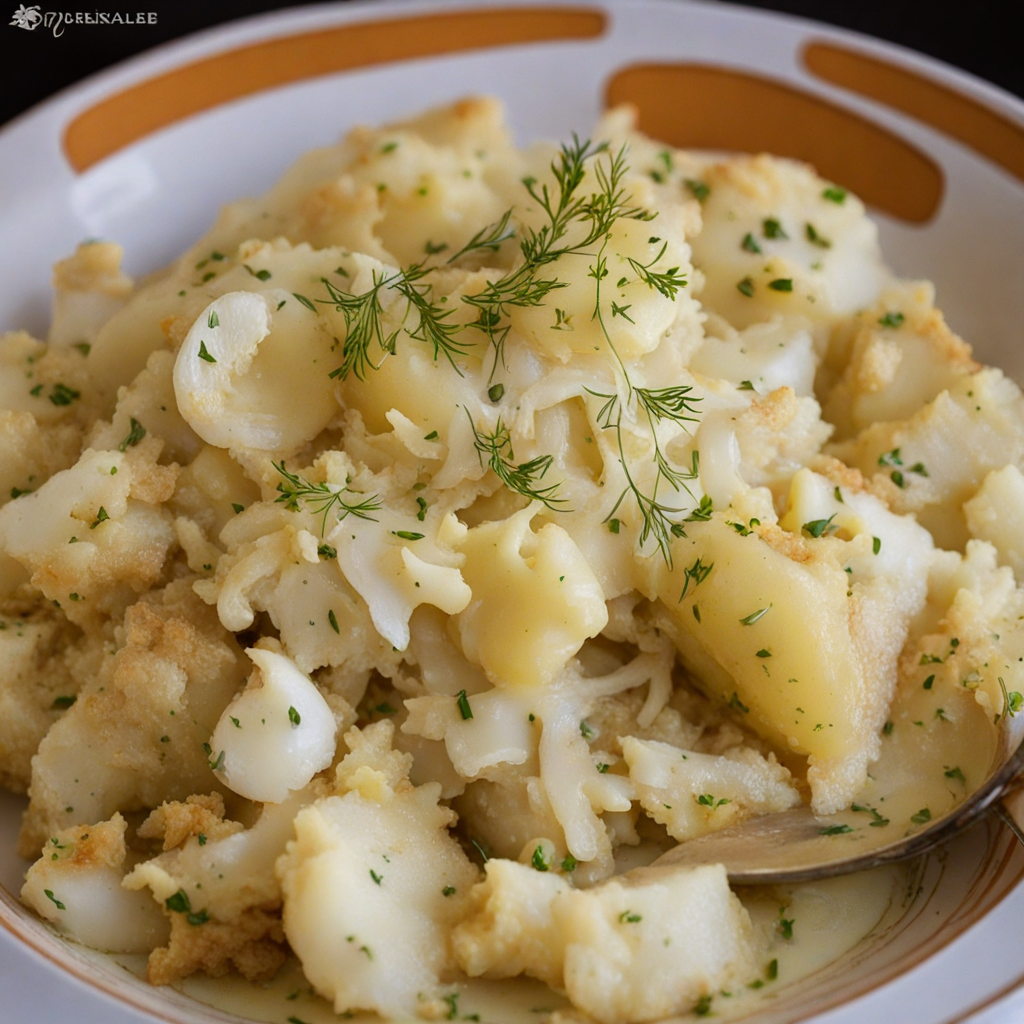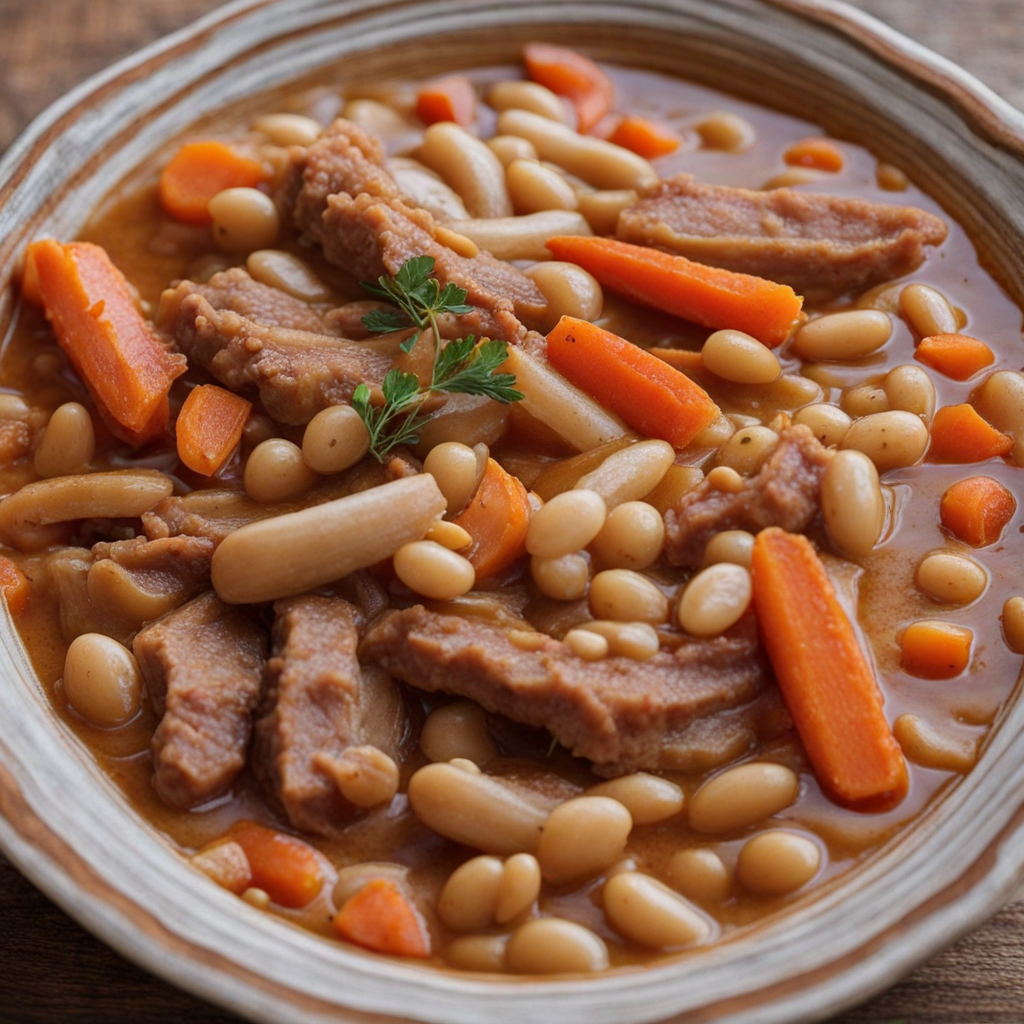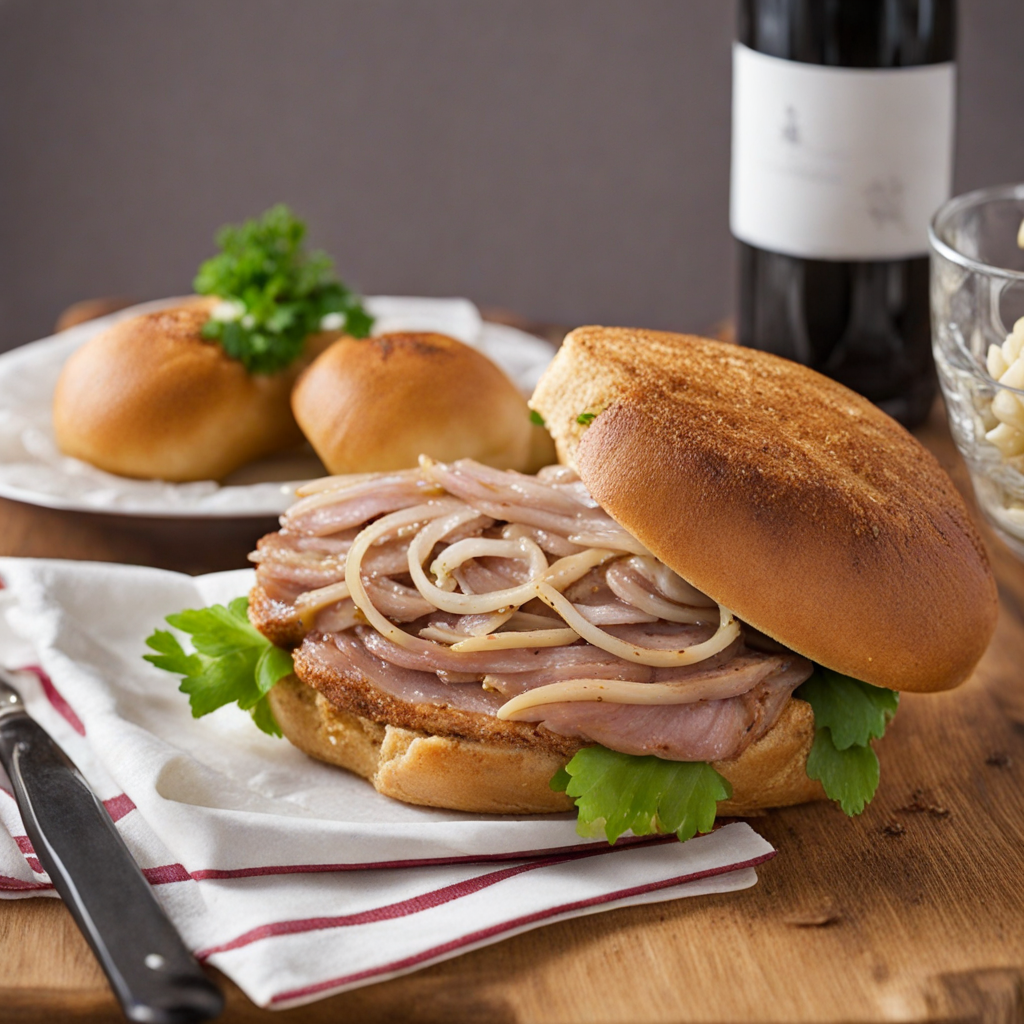Rebuçados de Ovos
Rebuçados de Ovos are a delightful Portuguese confection that embody the rich culinary heritage of Portugal. These sweet treats are made primarily from egg yolks, sugar, and sometimes a hint of lemon or cinnamon, which adds a subtle depth to their flavor. The process begins with the careful separation of egg yolks, which are then whisked together with sugar until they achieve a creamy, custard-like consistency. This mixture is slowly cooked over low heat, allowing the sugars to dissolve fully and create a luscious texture that melts in your mouth. Once the mixture reaches the desired thickness, it is poured into molds or rolled into small balls, often dusted with powdered sugar. The result is a glossy, golden candy with a smooth exterior that contrasts beautifully with the rich, sweet filling inside. The vibrant color of Rebuçados de Ovos not only makes them visually appealing but also hints at the indulgent flavor that awaits. Each bite offers a burst of sweetness, perfectly balanced by a slight creaminess that lingers on the palate. These treats are often enjoyed during festive occasions and celebrations, making them a beloved staple in Portuguese culture. They can be found in various shapes and sizes, and some artisans even infuse them with local flavors, such as nuts or fruit extracts, to create unique variations. Whether you savor them as a standalone dessert or pair them with a cup of coffee, Rebuçados de Ovos promise a delightful exploration of Portugal's sweet culinary landscape, inviting you to indulge in their exquisite taste and texture.
How It Became This Dish
The Sweet History of Rebuçados de Ovos: A Portuguese Delight #### Origins Rebuçados de Ovos, or egg candies, are delightful confections that encapsulate the rich culinary heritage of Portugal. Their origins can be traced back to the convents of the country during the late Middle Ages, a time when religious institutions played a pivotal role in the social and cultural life of Portugal. The use of egg yolks in desserts became popular as a result of the egg whites being utilized for various purposes in convents, such as clarifying wine and starching priests' vestments. The excess egg yolks, rather than going to waste, were creatively transformed into sweet treats, leading to the birth of several traditional Portuguese desserts. The convents, often referred to as "conventual" kitchens, became laboratories of culinary innovation, fostering the development of unique recipes that have endured through the centuries. Rebuçados de Ovos emerged as a testament to the resourcefulness of these nuns, who concocted luscious sweets that would later delight the palates of the Portuguese people. #### Cultural Significance Rebuçados de Ovos hold a significant place in Portuguese culture, serving not just as a dessert but also as a symbol of tradition and community. These candies are often associated with celebrations and gatherings, making them a cherished treat during festive occasions. They are particularly popular during Easter, a time when many Portuguese families indulge in culinary delights that reflect their heritage. In addition to their role in celebrations, Rebuçados de Ovos also highlight the broader cultural landscape of Portugal, where food is intertwined with history, religion, and social customs. The act of making these candies often becomes a communal activity, where families gather to prepare and share their creations, thus strengthening bonds and preserving traditions. Moreover, these egg candies represent Portugal's historical ties to the Age of Discovery. As Portuguese explorers traveled the world, they brought back new ingredients and cooking techniques. The incorporation of sugar, a luxury item at the time, into the preparation of Rebuçados de Ovos illustrates the blending of local and foreign influences that characterize Portuguese cuisine. #### Development Over Time As Portugal evolved through the centuries, so did the recipes and methods for making Rebuçados de Ovos. The 18th and 19th centuries marked a period of refinement for Portuguese sweets, with many traditional recipes being documented in cookbooks. This was a time when the culinary arts were increasingly gaining recognition, and the confectionery business began to flourish. In the early 20th century, the industrialization of sugar production and the advent of modern cooking techniques made Rebuçados de Ovos more accessible to the general public. Confectioneries began to pop up across cities, and these delectable candies became a staple in local shops. While convents remained the heart of traditional recipes, the commercialization of Rebuçados de Ovos allowed for variations that catered to a broader audience. The classic recipe for Rebuçados de Ovos includes simple ingredients: egg yolks, sugar, and occasionally, a hint of lemon or cinnamon for flavor. The egg yolks are whipped with sugar until they achieve a creamy consistency, after which the mixture is cooked gently until it thickens. The resulting candy is then shaped, often resembling small, glossy nuggets or bonbons, and dusted with sugar or coconut. In recent years, the culinary landscape of Portugal has seen a resurgence of interest in traditional foods, with chefs and home cooks alike rediscovering age-old recipes. Rebuçados de Ovos have undergone a renaissance, with modern interpretations adding unexpected twists. Innovative chefs experiment with flavor infusions, incorporating ingredients like chocolate, cardamom, or even spicy peppers, creating a new hybrid of the classic candy that appeals to contemporary tastes. #### Regional Variations Throughout Portugal, regional variations of Rebuçados de Ovos exist, each reflecting the local culture and preferences. In the Alentejo region, for example, the candies are often made with a richer blend of spices, while in the coastal areas, a touch of sea salt may be added to enhance the sweetness. In the Azores, local fruits might be incorporated, giving a unique twist to the traditional recipe. These variations are not only a testament to the diversity of Portuguese cuisine but also highlight the importance of local ingredients and culinary practices. The ability to adapt and innovate while staying true to the roots of the recipe speaks to the resilience of Portuguese gastronomy. #### Modern Day Relevance Today, Rebuçados de Ovos are more than just a nostalgic treat; they represent a continuous link between the past and present. They are often featured in gourmet shops and artisanal bakeries, where they are crafted with care and attention to detail. The rise of food tourism has also brought these candies into the spotlight, with visitors seeking authentic culinary experiences that allow them to connect with Portugal's rich gastronomic heritage. The resurgence of interest in traditional foods has given rise to workshops and classes dedicated to teaching the art of making Rebuçados de Ovos. These classes not only preserve the techniques passed down through generations but also engage younger audiences who are eager to explore their culinary roots. As Portugal continues to navigate the complexities of modernity, Rebuçados de Ovos stand as a delicious reminder of the country’s rich history, cultural identity, and the artistry of its culinary traditions. They embody the spirit of Portuguese hospitality, inviting everyone to share in the sweetness of life, one egg candy at a time. Conclusion Rebuçados de Ovos are more than mere candies; they are a delicious embodiment of Portugal's history, culture, and culinary innovation. From their humble beginnings in convent kitchens to their modern-day popularity, these egg-based sweets tell a story of resourcefulness, tradition, and the enduring human connection through food. As we savor each bite, we partake in a rich narrative that spans centuries, celebrating the flavors and traditions that continue to define Portuguese cuisine today.
You may like
Discover local flavors from Portugal


